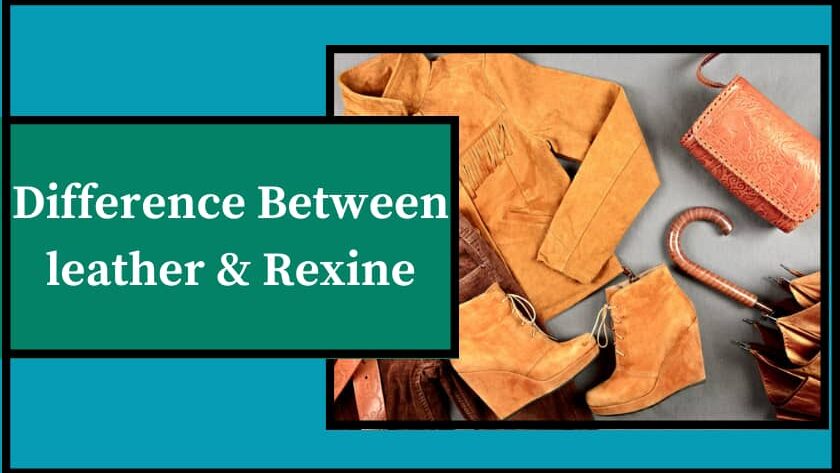Which is Better: Rexine or Leather? Let’s Talk
If you’re a history buff, you’ll recall that in the early 1990s, when real leather was pricey and the globe was experiencing inflation, people sought cheaper alternatives for clothes. The word “Rexine” was coined at that point. Leather was especially popular among soldiers since it was supposed to provide protection against intense cold. Previously, cellulose nitrate, camphor oil, and alcohol were used to make rexine. These components created a material that resembled genuine leather in appearance and feel. It became popular among bookbinders and the automobile sector, in addition to clothing. This trend gave rise to the concept of leather interiors in vehicles.
Essentially, the main appeal of imitation leather coats and jackets, also known as Rexine, is that it caters to individuals who either cannot afford real leather or avoid it for ethical reasons. Over the years, manufacturers have developed processes to make rexine less toxic and more environmentally friendly. Today, plant-based components and modern polymers are integral to its production.
What Exactly Is Rexine Material?
Over time, manufacturers have devised various methods for producing rexine. Initially, the environmental impact of rexine’s chemical components was overlooked. However, community outreach programs on climate change have encouraged a shift towards more sustainable, plant-based materials. Some producers also incorporate minimal animal skin to give rexine a leather-like texture and feel.
While rexine is less durable than real leather, it’s an excellent option for those who prefer variety in their wardrobe or accessories. Cars, being more susceptible to heat and moisture, benefit from rexine interiors, which are affordable and easier to maintain. Despite its advantages, rexine is prone to damage in high temperatures, requiring cautious usage.
Is Rexine Waterproof?
Rexine is a fabric material made waterproof through chemical treatments. While a small amount of real leather may be mixed into rexine for durability, it typically has no inherent water resistance. Items made from rexine should be kept away from wet conditions to avoid damage.
Rexine Leather’s Drawbacks
Although rexine has numerous advantages over real leather, it comes with some drawbacks:
- Limited Longevity: Rexine requires frequent replacement compared to leather.
- Heat Sensitivity: Rexine can generate heat, making it unsuitable for summer use.
- Color Transfer: Low-quality rexine may leave dye stains on clothing.
- Fragility: Rexine furniture can be easily damaged and may not withstand regular cleaning or usage.
In terms of richness, durability, and aesthetic appeal, rexine falls short compared to genuine leather. While leather may cost more, its longevity and timeless appeal make it a worthy investment.
What is Leather?
Leather is a natural material derived from animal skins and is used to create a wide range of products, including shoes, sofas, and jackets. Leather quality varies based on factors like animal breed and treatment, with full-grain, top-grain, corrected-grain, and bonded leather being the main types. Full-grain leather, for instance, offers unmatched durability and aesthetic appeal.
What is Rexine?
Rexine is an artificial fabric that mimics the appearance of leather. It was originally developed in the United Kingdom by Rexine Ltd near Manchester. Made from fabric coated with synthetic resin, color, alcohol, and camphor oil, rexine is primarily used for bookbinding and upholstery. While it’s not genuine leather, it remains a cost-effective alternative.
How to Tell the Difference Between Rexine and Leather
High-quality synthetic leather can be challenging to distinguish from real leather at first glance. However, closer inspection reveals key differences:
- Pores: Real leather has unevenly spaced pores, while rexine displays uniform or repeated patterns.
- Texture: Real leather feels buttery and soft; rexine has a slightly plastic texture.
- Odor: Genuine leather has a distinct natural smell, unlike rexine.
FAQs
1. What lasts longer, rexine or leather? Leather lasts significantly longer than rexine due to its natural durability and resistance to wear and tear.
2. Is rexine environmentally friendly? Modern rexine production methods incorporate plant-based materials to reduce environmental impact, but it’s still less eco-friendly than genuine leather.
3. Can rexine be repaired? Minor scratches on rexine can be repaired, but extensive damage often requires replacement.
4. Which is better for furniture: rexine or leather? Leather is better for furniture due to its durability and timeless appeal. Rexine is a more budget-friendly option but requires careful maintenance.
5. Is rexine suitable for all climates? No, rexine is not ideal for extreme heat or humidity as it can degrade under such conditions.
6. Why is leather more expensive than rexine? Leather’s cost reflects its natural sourcing, durability, and processing. Rexine, being synthetic, is cheaper to produce.
7. Can leather and rexine be used together? Yes, some manufacturers combine leather and rexine to balance cost and quality, especially in furniture and accessories.
By understanding the differences between rexine and leather, you can make informed choices based on your needs, preferences, and budget.




